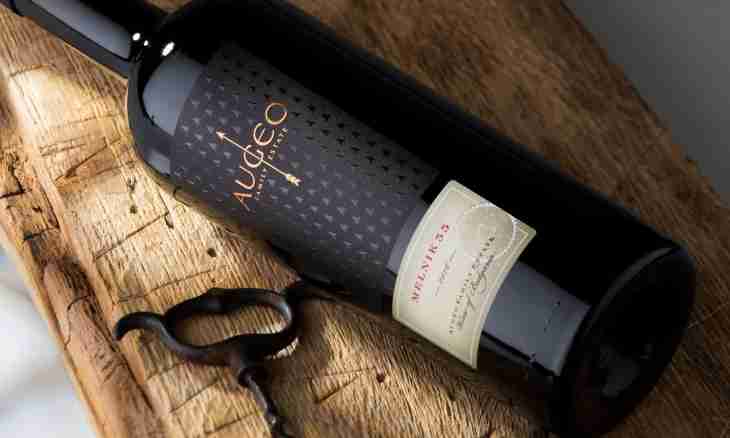The current variety of wines on counters is pleasing to the eye and allows fans of this drink to enjoy it, choosing it according to the preferences. But how to be to buyers, still inexperienced in the choice of wine, but having desire to understand it. For a start it is worth studying rules of reading the wine label.
It is required to you
- - shop or alcoholic boutique with the good wine range;
- - rules of reading wine labels.
Instruction
1. Most outlets have wine on the counters on producing countries. Therefore, choosing wine on a table, you can find the bottles standing nearby, for example, of Italian wine, very different from each other at the price. Here knowledge of classification of the European, so-called "old-world" wines will be useful. His oldest and most esteemed producer – France has the most difficult classification of wines. All wine-making regions are divided there into so-called appelasyona where strict rules of production of grapes of certain grades and wine on the established technology work. The systems of classification of wines of Italy and Spain are quite similar among themselves. At Germans of wine are classified a little in a different way.
2. Ordinary table wines for daily consumption at the French are marked on the label as Vin de Table, at Italians they are designated as Vino da Tavola, and Spaniards have Vino de Mesa. Germans mark such wines an inscription on the Tafelwein label. For these wines use for production of wine materials from various wine-making regions of the country is allowed. On labels of such wines it isn't obligatory to specify year of production and a grade of the used grapes.
3. Further on hierarchy the local wines produced from grapes only from the specified wine-making region follow. On the label the year of a harvest, a grapes grade, the name of the region and the place where wine was bottled is specified. Preference in that case should be given to the wines poured directly on the place of their production. In France such wines are marked by the inscription Mis en boutoilles an Chateau on the counter-label. Spain manufactures them under the name Vino de la Tierra, in Italy - Indicazione Geografica Tipica, or for short IGT, the French mark these wines as Vin de Pays, and at Germans they are called Landwein.
4. French wines of controlled names by origin - Appellation d’Origine Controlee, the Spanish Denominación de Origen and Denominación de Origen Calificada, the Italian Denominazione d’Origine Controllata and Denominazione d’Origine Controllata e Garantita belong to high-quality wines from Europe. Germans mark such wines as Qualitätswein bestimmter Anbaugebiete QbA and Qualitätswein mit Prädikat. Production of these wines is under thorough control of the special commissions at the level of the state. On labels of such wines the name of the wine-making region or an appelasyon (for wines of France), year of a harvest and the address of the producer has to be surely specified. For many European wines of these categories of a grade of the used grapes aren't specified since the high-quality structure is strictly controlled by the commissions and it is caused by rules of appelasyon.
5. Also quality wines of the highest categories are subdivided into own subcategories which are also specified on the wine label. For French wines of category AOS there is an internal classification: Cru, Grand Cru, Premier Cru, etc., the characterizing wines of premieres class of the well-known appelasyon. These wines are bought, as a rule, for a special case. The Spanish subcategories designate gradation on endurance and are subdivided into Joven – young, Roble (oak) or Semi-Crianza - the wine matured about one year, Crianza - wine with endurance of one year, Reserva – the wine matured of 3 years from them in one year an oak, Gran Reserva - the wine matured of 6 years from them in an oak of 2 years. The wines corresponding French "крю" that means "a separate vineyard" belong to the category of Vino de Pago Spanish wines. The division of wines on subcategories on their sugar content is characteristic of Germany: Kabinett, Spätlese, Auslese.
6. Reading labels of wines of Australia, New Zealand, Chile, Argentina, South Africa and the USA called wines of the New World it is necessary to approach not so scrupulously, as the European. It is caused by the fact that wine legislations of these countries aren't so developed also izoshchrena. Choosing wines of the New World, it is necessary to give preference to high-quality structure of wine. As a rule, the full high-quality structure is specified on the counter-label. Very often monosepazhny wines are called by the name of a grade of grapes from which these wines are produced. Also labels of such wines are marked for year of a harvest and the name of the wine-making region. Many wines are supplied with information on the place of bottling on the counter-label. At wines of the USA poured directly on the production site there will be an inscription Estate-bottled.

